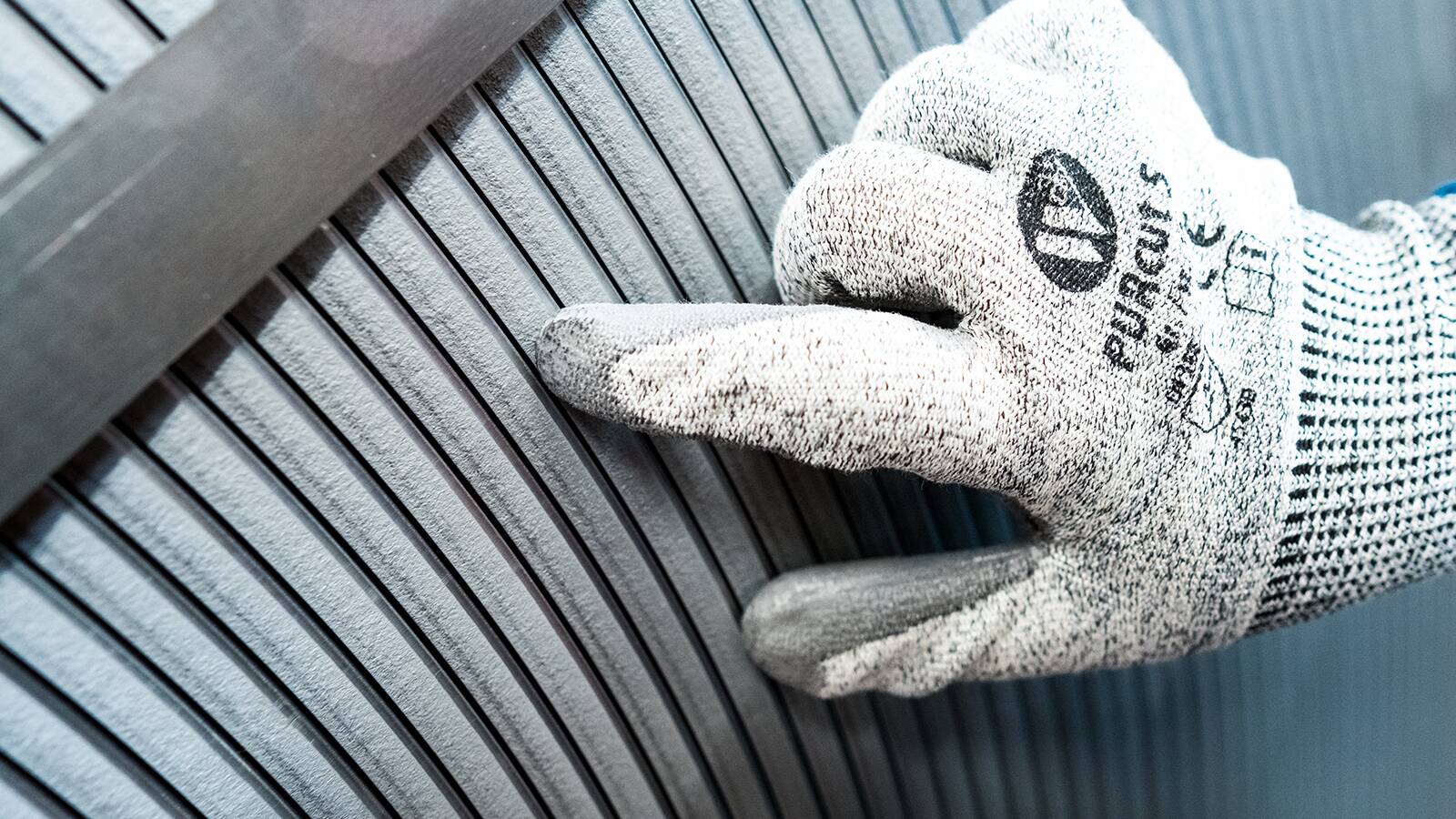Fine blanking is a popular method for cutting cold rolled steel strip when it’s important to achieve smoothly cut surfaces. If the end product needs to have a considerable material thickness, however, fine blanking places very special demands on the cold rolled steel strip used: its microstructure must have a high and uniform formation of carbides over the entire cross section so that tear-free cuts are possible. This requires a sophisticated rolling and annealing process. Moreover, the correspondingly thick primary material needs to be rolled with extremely high rolling forces, which Waelzholz’s specially designed rolling mills make possible.
Optimum fine blanking: cold rolled steel strip up to 12.5 mm thick
Many automotive or other industrial products that are relevant to safety or subject to high loads are made of solid components so that they can withstand the high levels of stress. Examples include the parking pawl in automatic transmissions in vehicles or crank webs in chainsaws, which transfer the power from the connecting rod to the crankshaft. Machining solid steel blocks is the traditional process used to manufacture such products, but it is extremely cost-intensive and involves consuming a great deal of energy and scrap. An efficient alternative to this is fine blanking from cold rolled steel strip with high material thicknesses. Waelzholz produces suitable cold rolled steel strip grades with a thickness of up to 12.5 millimeters (0.492 inch) – which require highly specialized manufacturing expertise – with decades of experience and maximum precision.
The challenge of material thickness: cold rolled steel strip with a thickness of up to 12.5 millimeters (0.492 inch)
To produce cold rolled steel strip, at least 25 percent of the primary material's original material thickness must be rolled off.. If the end product needs to have a material thickness of 10 millimeters (0.394), for example, the primary material must be over 13 millimeters (0.512 inch) thick. Matthias Nagel, responsible for quality assurance at the Waelzholz plant in Plettenberg, Germany, describes the challenge in processing: “As the thickness of the primary material increases, the rolling forces required rise exponentially. Our extensive range of machinery includes rolling mills specially designed to meet these requirements for thick steel strip. Our production lines can apply a rolling force of up to 900 tons.” But it’s not just the rolling mill that has to be designed for the special material thickness, adds Nagel: “High material thicknesses of around 10 millimeters were previously only produced as sheet material because they could not be wound up. Today, we can wind cold rolled steel strip up to 12.5 millimeters thick into a coil using special coiling systems.” For Waelzholz customers, the coils significantly increase efficiency in their finishing processes compared to the sheets.














